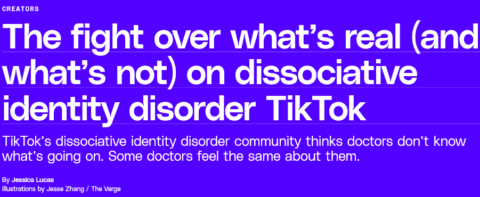Tasting History with Max Miller
Published Jun 18, 2024Biscuits topped with salt pork milk gravy
City/Region: United States of America
Time Period: 1881Food prices skyrocketed during the Gold Rush. A single egg could cost $1 (in the mid-1800s!), and a barrel of flour went from $3 to a whopping $400, which equals about $16,000 today. Once you had some flour and a few other staples, including the newly invented canned evaporated milk, you could make these biscuits and gravy.
I love biscuits and gravy, and while the best biscuits and gravy I’ve ever had will always be my grandpa’s, this is pretty good. My biscuits turned out a little flat, but that’s just because I forgot the baking soda.
Cream of Tartar Biscuits
Mrs. Milliken
One quart of flour, three heaping teaspoonfuls of pure cream of tartar, a piece of butter two-thirds the size of an egg, well worked in flour, one heaping teaspoonful of Babbit’s salaratus, dissolved in sweet milk. Make the dough as soft as can be kneaded conveniently; roll a half inch thick, cut in biscuits, and bake in a quick oven.
— Los Angeles Cookery, 1881
October 2, 2024
How Gold Rush Miners Ate in the Wild West
October 1, 2024
Devastation in the Carolinas
My oldest friend moved to the United States many years ago, moving around the country as his job dictated, but a few years back he and his wife found their perfect house near Asheville, NC. We had emailed to see how they were doing, but got no answer. Yesterday, I got a call from my friend’s cell phone to say that he and his wife were fine and they’d taken in an elderly neighbour until things get back to normal, but they currently don’t have electricity, land line telephone, or municipal water, but they’re otherwise fine. Their house is well above flood level, and he has sufficient camping supplies to keep them going for a while. He loaned his chainsaw to another neighbour who was trying to organize work parties to cut away fallen trees and branches and get more of the local roads open again (my friend recently had lyme disease and doesn’t want to trust his hands doing something as risky as running a chainsaw). We kept the call as short as possible, as he’ll have to manually recharge his phone until power is restored.
Virginia Postrel is originally from that same area of western North Carolina and northwestern South Carolina and reports on how her family in the area is doing in the aftermath of Hurricane Helene:

One of the many examples of the “horizontal forest” on nearly every road in Greenville, SC.
Photo by Virginia’s brother Sam M. Inman IV.
If you read my autobiographical reminiscences, you may have realized that I have family in Upstate South Carolina and western North Carolina, which have been hit hard by the unexpected ferocity of Hurricane Helene. Power has been out in Greenville, SC, for days and roads are nearly impassable because of downed trees on nearly every block.
My brother Sam, who went out in a truck on Friday to buy gasoline for his generator, said only about half the stations that had working pumps and were running out of gas quickly. “Lines of cars around the block … reminiscent of the 1970s”, he texted. He went out again today and found a stark difference between local QuikTrip stations and others. At QT, the lines were longer but flowed faster because stations had closed all but a single entrance and exit. Elsewhere, stations were chaotic traffic jams. At one point, he found himself unable to exit after fueling up because the cars behind and in front of him left no to maneuver room. (He persuaded the one behind him to ease away from his bumper.)
The assisted living place where my mother lives has a generator and at first continued to operate its kitchen and elevators. By today, however, the generator had become unreliable, the lights were flickering, few employees could get to work, and the kitchen was offering dry Cheerios for breakfast. Sam brought our mom to his house, which has no power. He later realized that he needed to return to get her medicine, which usually is delivered daily. I can only imagine how residents who don’t have local family — or who are in the memory care wing! — are managing.
Even people who were prepared with generators, many bought after a blizzard 20 years ago, needed gasoline to power them and, they soon realized, adapters to connect them to household appliances. The adapter aisle at Home Depot was quickly depleted.
The good news is that food is available. Grocery stores are operating more or less as normal, assuming you can get to them. When you sell frozen food, you apparently install large, reliable generators.
Meanwhile, my cousin in Asheville finally got weak cell signal back today. We’d been unable to communicate with her before now. With her husband, pets, and 95-year-old mother, she’s evacuating to Winston-Salem through the weekend, hoping Duke Power will live up to promises that power will be restored by Friday but preparing in case it takes a few days longer.
Although terrible in some areas, the flooding isn’t as bad as it might be, thanks to the region’s many man-made lakes. They absorbed water that otherwise would have flowed into populated towns.
ZH-29 Semiauto Rifle
Forgotten Weapons
Published Apr 16, 2015The ZH-29 was the brainchild of noted Czech arms designer Emmanuel Holek in the late 1920s. It was one of the earliest practical and reliable semiauto rifles available, although Holek and the Brno factory were unable to secure any large orders for it (the three known orders total about 500 rifles, for China, Lithuania, and Ethiopia). Several other countries tested the rifle (including the United States), but none adopted it. The ZH29 was a long-stroke gas piston operated rifle with a tilting bolt which actually pivoted sideways into the left side of the receiver to lock. This design choice led to some unusual geometry to the gun, as the barrel is mounted at an angle to the receiver, so as to be perpendicular to the breech face when the bolt is in its locked position. Manufacturing quality was excellent on these rifles, and they all display a very pretty plum patina today. This particular example has no magazine with it, but my understanding is that ZB26 LMG magazines are a perfect fit.
QotD: Napoleon Bonaparte and Tsar Alexander I
Jane: … The most affecting episode in the whole book [Napoleon the Great by Andrew Roberts], to my mind — even more than his slow rotting away on St. Helena — is Napoleon’s conferences with Alexander I at Tilsit. Here are these two emperors meeting on their glorious raft in the middle of the river, with poor Frederick William of Prussia banished from the cool kids’ table, and Napoleon thinks he’s found a peer, a kindred soul, they’re going to stay up all night talking about greatness and leadership and literature … And the whole time the Tsar is silently fuming at the audacity of this upstart and biding his time until he can crush him. The whole buildup to the invasion has a horror movie quality to it — no, don’t go investigate that noise, just get out of
the houseRussia! — but even without knowing how horribly that turns out, you feel sorry for the guy. Napoleon thinks they have something important in common, and Alexander thinks Napoleon’s very existence is the enemy of the entire old world of authority and tradition and monarchy that he represents.Good thing the Russian Empire never gets decadent and unknowingly harbors the seeds of its own destruction!
John: Yeah, I think you’ve got the correct two finalists, but there’s one episode in particular on St. Helena that edges out his time bro-ing out with Tsar Alexander on the raft. It’s the supremely unlikely scene where old, beaten, obese, dying Napoleon strikes up a bizarre friendship with a young English girl. It all begins when she trolls him successfully over his army freezing to death in the smoldering ruins of Moscow, and after a moment of anger he takes an instant liking to her and starts pouring out his heart to her, teaching her all he knows about military strategy, and playing games in her parents’ yard where the two of them pretend to conquer Europe. Call me weird, but I think this above all really showcases Napoleon’s greatness of soul. That little girl later published her memoirs, btw, and I really want to read them someday.
Jane and John Psmith, “JOINT REVIEW: Napoleon the Great, by Andrew Roberts”, Mr. and Mrs. Psmith’s Bookshelf, 2023-01-21.
September 30, 2024
British and Australian schools are teaching boys to hate themselves
Janice Fiamengo discusses the sort of things British and Australian boys are being taught about themselves and their role in society:
For years, feminists in the English-speaking school systems have done everything they can to psychologically destroy a generation of boys, calling their masculinity “problematic”, “hegemonic” and “toxic”.
At their least malign, feminist teachers have made it clear to boys that their perspectives and experiences aren’t as important as those of girls. Many businesses and organizations support programs aimed at girls’ academic success; there are no equivalent programs for boys. When study after study shows boys lagging behind girls in school, many feminists don’t even pretend to care, blaming the boys, as did Australian feminist Jane Caro, for their alleged privilege. Such ideologues continue to call for more feminist teaching, and moreover take direct aim at schoolboys’ maleness in what scholar Paul Nathanson has identified as a form of identity harassment, a pervasive psychological assault that creates doubt, shame, and alienation.
Under the feminist model, boys learn from a young age that their sex is responsible for violence and other serious harms, and that they must take personal responsibility for it. A few years ago, it came to light that the female principal of an Australian school thought it a good idea to hold an assembly in which the boys were to apologize for male misbehavior to the girl next to them. Naturally, no girls are ever expected to apologize to boys for the misdeeds of the female sex.
Calls regularly circulate, as in the West Australian‘s “How We Stop This Kid Becoming a Monster“, for teaching to address the problem of predatory masculinity. Unless the feminist deprogrammers can get to work in the early years, we’re told, the boys will succumb to their inner monster. Boys learn that they can hurt girls and women even without meaning to, just by looking at them or holding traditional views. As we’ll see, any boy who objects to his own vilification will learn that objecting itself is a technique of domination.
Teaching Toxic Masculinity
A recent report on UK schools provided a glimpse into what feminist instruction looks like, revealing that terms such as “hegemonic masculinity” and “toxic masculinity”, until a decade ago part of the radical feminist fringe, are now in the mainstream of pedagogy even in the lower grades.
The Family Education Trust surveyed materials used by UK schools in their sex education classes. Out of 197 schools that responded to a request for information (more than 100 did not respond), 62 schools confirmed that they were teaching about toxic masculinity. 10 schools even admitted to teaching that “men and boys possess traits that are inherently toxic and negative for society“. (One would be relieved to hear that the principals of such schools and all participating teachers were immediately sanctioned, or at least told to stop such claptrap — but of course such has not occurred.)
One slide from a lesson on toxic masculinity stated that while “masculinity in and of itself is not necessarily a harmful thing […] the way that masculinity is traditionally defined in society can be problematic”. Some of the materials don’t even make sense, as for example the statement that traditional masculine traits “can be limiting for women, girls and other people who don’t identify as men, who are not expected to display these traits”.
Saving German democracy seems to require not following the law for some reason
[Update below] I’m sure that Germany is being well-served by their politicians who only seem to want to obey the law when it suits them. I mean, that’s how you save democracy, right? By ignoring democratic laws for a “higher good” every now and again?

Jürgen Treutler, the supergenius fascist who discovered that all you need to do to establish fascism is follow all democratic laws and procedures rigorously and to the letter.
They never tire of telling us that we live in a democracy.
This means that that dreaded mass known as “the people” are permitted – with however much groaning and reluctance – to present themselves every four years to choose their representatives. These representatives then betake themselves to the parliament, where they form some manner of government, which proceeds to rule us in highly democratic ways. This is is literally the best thing ever, except for the fact that “the people”, in their profound stupidity, cannot always be relied upon to vote for the right parties. Sometimes they vote for the wrong ones, and in these cases democratic solutions must be found to rein in the rabble’s undemocratic exercise of democracy.
The people of Thüringen have proven themselves particularly inconvenient to democracy, in that they have exercised their democratic rights to vote overwhelmingly for the evil, fascist and antidemocratic party known as Alternative für Deutschland. What makes the AfD so evil and fascist is never quite explained, but we hear all the time that they are very bad so the point must be beyond question. The people of Thüringen transgressed against democracy so powerfully, that they gave the AfD 32 seats of their 88-seat state parliament – far more than they granted to any of the upstanding, democratic parties. These parties include such paragons of democratic virtue as Die Linke (the Left Party), which somehow manages to be both officially democratic and also the direct successor to the DDR-era Socialist Unity Party (they got a mere 12 seats); the Linke-offshoot party known as the Bündnis Sahra Wageknecht (they got 15 seats); the Christian Democrats (they got 23 seats); and the Social Democrats (they got 6 seats, lol).
Now, a naive person might think that the AfD, being the party most favoured by the people of Thüringen, should enjoy certain parliamentary prerogatives. Existing procedures, for example, grant the strongest party the right to propose candidates for the office of parliamentary president. The president is the person who presides over the meetings of the parliament; he is like a glorified committee chair and his powers are not all that great. The very idea that the AfD might have the right to suggest their own candidates for president, however, strikes enormous fear into the hearts of the “democratic” parties, who are determined to save Thuringian democracy by all the antidemocratic means at their disposal. If necessary, we must destroy democracy itself, to save the Thuringian parliament from the spectre of a democratically elected AfD president.
This brings us to the absolute unprecedented clownshow that unfolded yesterday at the Thuringian parliament in Erfurt. It was set to be a day of boring, routine procedure, when the newly elected parliament would constitute itself and elect a president. Thüringen is anomalous, in that this state – alone of all the federal states of Germany – has a specific law mandating adherence to parliamentary procedures. New parliaments cannot just change these procedures on the fly; they have to be officially constituted as a legislative body first. These legally mandated procedures require that an acting “senior president” preside over the first meeting of the new parliament. This senior president is simply the oldest member of the dominant party – in this case an affable rotund AfD politician named Jürgen Treutler.
Update: eugyppius updates the state of play in Thuringia after the relevant court rules that the law can be set aside in this case:
In not-so-good news (but as I predicted), the state constitutional court in Thüringen ruled in favour of the CDU last Friday. The other parties were able to change the procedural rules in the Thuringian parliament and exclude the AfD not only from the office of president, but also from the entire executive committee of the Landtag. The “democratic” parties have also altered procedural rules to reduce AfD representation on parliamentary committees, effectively preventing the strongest party in the Landtag from exercising their blocking minority there.
They really are determined to destroy the democracy to save it.
Sulla, civil war, and dictatorship
Adrian Goldsworthy. Historian and Novelist
Published Jun 5, 2024The latest instalment of the Conquered and the Proud looks at the first few decades of the first century BC. We deal with the final days of Marius, the rise of Sulla, the escalating spiral of civil wars and massacres as Rome’s traditional political system starts breaking down.
Primary Sources – Plutarch, Marius, Sulla, Pompey, Crassus, Cicero and Caesar. Appian Civil Wars and Mithridatic Wars.
Secondary (a small selection) –
P. Brunt, Social Conflicts in the Roman Republic & The Fall of The Roman Republic
A. Keaveney, Sulla – the last Republican
R. Seager, Pompey the Great: A political Biography
QotD: Compound eyes as models of how the surveillance state operates
Compound eyes, common with insects and crustaceans, are made up of thousands of individual visual receptors, called ommatidia. Each ommatidium is a fully functioning eye in itself. The insect’s “eye” is thousands of ommatidium that together create a broad field of vision. Every ommatidium has its own nerve fiber connecting to the optic nerve, which relays information to the brain. The brain then processes these inputs to create a three-dimensional understanding the surrounding space.
The compound eye is a good way to imagine how the surveillance state will keep tabs on the subjects in the near future. Unlike the dystopian future imagined by science fiction, it will not be one eye focusing on one heretic, following him around as he goes about his business. Instead it will be tens of millions of eyes obtaining various bits of information, sending it back to the data-centers run by Big Tech. That information will be assembled into the broad mosaic that is daily life.
For example, rather than use informants and undercover operatives to flesh out conspiracies against the state, the surveillance state will use community detection to model the network of heretics. Since everyone is hooked into the grid in some fashion and everyone addresses nodes of the grid on a regular basis, keeping track of someone is now something that can be done from a cubicle. There is no need to actually follow someone around as they go about their life.
For example, everyone has a mobile phone. At every point, the phone is tracking its location, which means it is tracking your location. It also knows the time and day when you go into various businesses. Most people use cards to pay miscellaneous items, so just that information would tell the curious a lot about you. Combine that information with the same information from other phones that come into close proximity with your phone and figuring out the community structure is simple.
Of course, the mobile phone is not the only input device. Over Christmas, millions of Americans were encouraged to install surveillance devices in their homes by friends and family. Maybe it was an Alexa listening device from Amazon or a Nest Doorbell surveillance device from Google. All of these gadgets are collecting data on your life inside and around your home. It is then fed to the same data-centers that have all of your movements and associations collected from your phone.
The Z Man, “The Compound Eye”, The Z Blog, 2020-01-08.
September 29, 2024
Fleeced: Canadians Versus Their Banks by Andrew Spence
In the latest SHuSH newsletter, Ken Whyte talks about one of Sutherland House’s most recent publications:
I could write about eight versions of this post based on the many revelations in Andrew Spence’s Fleeced: Canadians Versus Their Banks, the latest edition of Sutherland Quarterly, released this week. I’m going to run with the version most relevant to my fellow publishers and small business people in Canada.
Andrew lays out in aggravating detail how Canadian banks, although chartered by the federal government to facilitate economic activity in the broader economy, do all they can to avoid lending to small and medium businesses, never mind that small and medium businesses employ two-thirds of our private-sector labour force and account for half of Canada’s gross domestic product.
By OECD standards, small businesses in Canada are starved of bank credit, and when they are able to secure a loan, they pay through the nose. The spread between interest rates on loans to small businesses and large businesses in Canada is a whopping 2.48 percent, compared to .42 percent in the US—more than five times higher.
Why? Because Canada’s banks are a tight little oligopoly, impervious to meaningful competition. Their cozy situation allows them to be exceedingly greedy. Their profits and returns to shareholders are wildly beyond those of banks in the US and UK (and, as Andrew demonstrates, their returns from their Canadian operations are far in excess of those from the US market, meaning they screw the home market hardest.)
Our banks never miss an opportunity to impose a new fee, or off-load risk. From their perspective, small business involves too much risk — some of them will inevitably fail. The banks prefer that publishers and dry-cleaners and restaurateurs either finance themselves by pledging their homes, or use their credit cards to cover fluctuations in cash flow or make investments that will help them hire, expand, and grow. And that’s what entrepreneurs do. According to a survey by the Canadian Federation of Independent Business, only one in five respondents accessed a bank loan or line of credit. Half of respondents financed themselves, tapped existing equity and personal lines of credit, and about 30 percent used their high-interest credit cards.
(The banks, incidentally, claim they need to keep credit card rates around 20 percent because their clients are high credit risks when their own data shows the risk is minimal. They simply prefer to gouge customers. To a banker, forcing hundreds of thousands of small businesses to use their credit cards to finance their businesses rather than giving them proper small business loans at reasonable rates is great business.)
By severely rationing credit and making it exceedingly expensive, Canada’s banks siphon off an ungodly share of entrepreneurial profit to themselves while leaving the entrepreneur with all the risk. Their insistence on putting their own profits above service to the Canadian economy is one of the main reasons Canada has such a slow-growing, unproductive economy and a stagnant standard of living.
There is much else in this slim volume to make your blood boil: exorbitant fees on chequing and savings accounts; mutual fund expenses that torpedo investments; ridiculous mortgage restrictions, infuriating customer service …
The “Foundations” essay could apply equally to Canada’s doldrums as it does to Britain
Earlier this week, I linked to the “Foundations” essay by Ben Southwood, Samuel Hughes, and Sam Bowman and it struck me that so much of what they discuss about Britain’s stagnation applied at least as well to Canada. In the National Post, John Ivison concurs:
The “Foundations” essay pointed to moribund GDP per capita growth, among other data points, to make the argument that Britain is standing still economically. (Britain’s economy grew 0.7 per cent a year between 2002 and 2022, Canada’s increased 0.6 per cent a year in the same period, while U.S. output swelled 1.16 per cent a year.)
In relative terms, both countries are getting poorer: in 2002, Canada’s GDP per person was 81 per cent of the U.S.; in 2022, it was 72 per cent. The same figures for the U.K. against the U.S. are 78 per cent in 2002 and, 70 per cent in 2022.
The reason for Britain’s stagnation, the authors argue, is that it has effectively banned investment in transportation, energy and housing — “the foundations it needs to grow.”
Sound familiar?
“The most important economic fact about modern Britain is that it is difficult to build almost anything, anywhere. This prevents investment, increases energy costs and makes it harder for productive economic clusters to expand,” the authors write, saying the result is lower productivity, incomes and tax revenues.
They argued that Britain needs a program of reform with the scale and ambition of the liberalization of the 1980s that focused on cutting taxes, curbing union power and privatizing state-run industries.
“This time we must focus on making it easier to invest in homes, labs, railways, roads, bridges, interconnectors and nuclear reactors,” they write.
That’s a difficult proposition for politicians who are able to resist anything except the temptation to use resources for immediate electoral gratification, rather than investing for a time after they have left office.
Both Canada and Britain are laggards when it comes to investment in infrastructure. While China spent more than five per cent of its GDP on roads, bridges and other infrastructure in 2021, Canada invested just 0.5 per cent (down from 1.3 per cent in 2010) and the U.K. 0.9 per cent.
But the lack of dynamism is not simply political expediency. Rather, it is motivated by an indifference, even a hostility, toward building critical infrastructure.
The Foundations report noted that Britain has not built a reservoir for 30 years, yet faces chronic water shortages in the east of England. Its environmental agency has blocked new development on the basis that it could only be supplied with water by draining environmentally valuable chalk streams. The result is that England’s innovation hub, Cambridge, is barred from expanding, which threatens to strangle the country’s life-sciences industry.
Similar impulses are at work in Canada. Federal Environment Minister Steven Guilbeault said in February that Ottawa would stop investing in new road infrastructure — a position he later clarified to say meant the federal government would not fund large projects like a highway tunnel connecting Quebec City and Levis, Que.
That same sentiment is reflected in the federal Liberal government’s Impact Assessment Act, passed in 2019, which slowed the pace and increased the cost of major project approvals.
On the housing front, a generation of activists emerged who were intent on preventing urban sprawl yet were also opposed to building mid-rise buildings of the kind that eased housing pressures in continental Europe. Constraints on approval are a major contributor to the 3.5-million-unit housing gap because supply has not kept pace with demand.
The consequence of Canada’s regulatory sclerosis is what business veteran Paul Deegan and former clerk of the Privy Council Kevin Lynch in an FP Comment article earlier this year referred to as “an insidious stealth tax on Canadian jobs and growth“.
Taking each of the “foundations” in turn, the depth of the problem becomes clearer — but so do the solutions.
Yankee Go Home!
There’s a major war in continental Europe that might further embroil the NATO alliance in hot combat, so it’s the perfect time for … pulling the US military out of Europe and letting the European NATO allies handle their own defence needs, right?

“Finland flag raising at NATO Headquarters 4 April 2023” by UK Government Picture by Rory Arnold / No 10 Downing Street is licensed under CC BY 2.0 .
For decades, U.S. policy toward Europe stayed the same: Washington anchored itself to the continent via NATO and acted as the region’s main security provider while the European members of NATO accepted U.S. leadership. Today, however, much of the Republican Party has departed from this consensus, opting instead for a policy summed up by Donald Trump’s comments on “delinquent” NATO countries: “If they’re not going to pay, we’re not going to protect.” In other words, the United States may remain committed to Europe, but only if European states pay up. Democrats, for their part, have dug in deeper in response to this shift. President Joe Biden has affirmed the “sacred” Democratic commitment to European defense and trumpeted the admission of Finland and Sweden to NATO as a great achievement of his administration. Kamala Harris has signaled no departure from Biden’s position as the presumptive Democratic presidential nominee.
A debate about the U.S. role in Europe is long overdue, but both sides have wrongly defined the issues and interests at play. In fact, the United States has the same cardinal interest in Europe today that it has had since at least the early 1900s: keeping the continent’s economic and military power divided. In practice, pursuing this goal has meant preventing the emergence of a European hegemon. Unlike the continent in the mid-twentieth century, however, Europe today lacks a candidate for hegemony and, thanks in part to the success of U.S. efforts after 1945 to rebuild and restore prosperity to Western Europe, another hegemonic threat is unlikely to emerge.
The United States should recognize that it has achieved its main goal in Europe. Having successfully ensured that no country can dominate the continent, it should embrace a new approach to the region. Under a revised strategy, the United States would reduce its military presence on the continent, Europeanize NATO, and hand principal responsibility for European security back to its rightful owners: the Europeans.
A Fine Balance
For more than 100 years, the United States has had one enduring national interest in Europe: keeping the continent’s economic and military power split among multiple states by preventing the emergence of a European hegemon that sought to consolidate that power for itself.
In World War I and World War II, Washington went to war to stop Germany from dominating Europe. NATO, founded in 1949, was designed to foreclose the possibility that a single country could take over the continent. As Secretary of State Dean Acheson remarked that year, the two world wars “taught us that the control of Europe by a single aggressive, unfriendly power would constitute an intolerable threat to the national security of the United States.”
U.S. support for NATO was a reasonable move at a time when the Soviet Union was threatening to overrun the continent, wartime memories were fresh, and Germany’s future was unclear. Yet even back then, Washington’s goal was not to take permanent responsibility for European security. Instead, NATO was intended as a temporary expedient to protect Western European states as they recovered from World War II, facilitate Western European efforts to balance Soviet power, and integrate West Germany into a counter-Soviet coalition that would also help civilize German power. In 1951, as the supreme Allied commander in Europe, Dwight Eisenhower noted, “If in ten years, all American troops stationed in Europe for national defense purposes have not been returned to the United States, then this whole project will have failed.”
To that end, Presidents Harry Truman and Eisenhower tried to pull together a “Third Force” of European power by encouraging France, the United Kingdom, West Germany, and other Western European states to combine their political, economic, and military resources against the Soviet Union. Once formed, this Third Force would relieve the United States of the duty to serve as Europe’s first line of defense. Only as it became clear in the late 1950s and early 1960s that Western European states worried as much about Germany as they worried about the Soviet Union did the United States reluctantly accept a more enduring role in the alliance.









